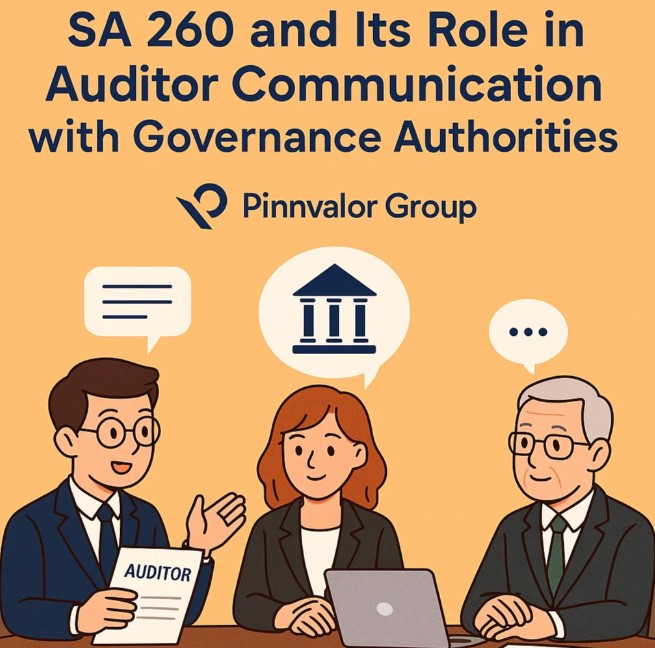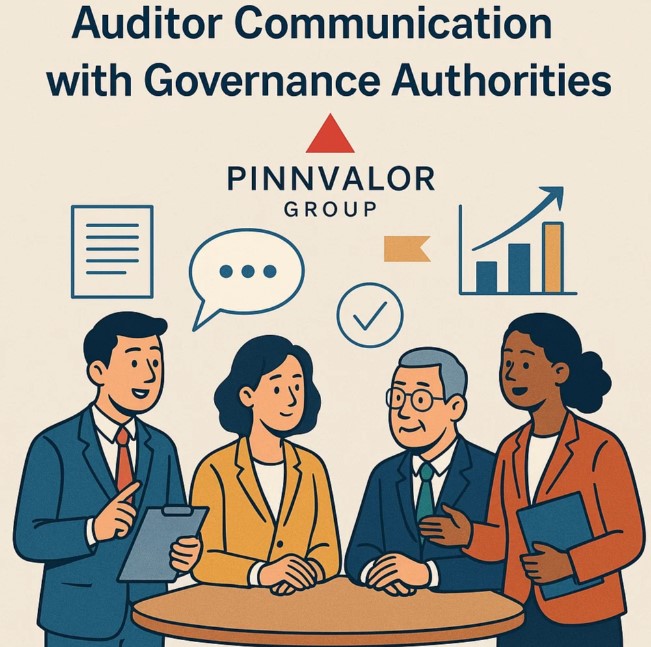
SA 260 and Its Role in Auditor Communication with Governance Authorities
Effective communication between auditors and those charged with governance (TCWG) is a vital part of a reliable and transparent audit process. SA 260, titled “Communication with Those Charged with Governance,” provides the guidelines auditors follow to ensure that communication with governance authorities is timely, relevant, and constructive. This blog explores what SA 260 entails, why it matters, and how it shapes the relationship between auditors and governance bodies.
In what ways does SA 260 guide auditors to engage governance authorities for better financial accountability?
Effective communication under SA 260 empowers governance bodies with timely insights, helping them navigate risks and uphold integrity in financial reporting. It’s a partnership that strengthens the foundation of corporate governance.
What is SA 260?
SA 260 is a standard issued by the Institute of Chartered Accountants of India (ICAI) that focuses on the communication process between auditors and those charged with governance. “Those Charged with Governance” refers to individuals or groups responsible for overseeing the entity’s strategic direction and accountability, such as the board of directors, audit committees, or trustees.
The main objective of SA 260 is to guide auditors in sharing important information that enables governance authorities to fulfill their responsibilities effectively. This promotes transparency, trust, and helps both parties work towards high-quality financial reporting.
Why is Communication with TCWG Important?
- Enhances Transparency: Open dialogue fosters trust and minimizes misunderstandings during the audit process.
- Strengthens Governance: Governance authorities depend on auditor insights to monitor financial reporting, risk management, and internal controls.
- Supports Informed Decision-Making: Timely audit communication helps governance members make well-informed strategic and operational decisions.
- Ensures Compliance: It alerts governance bodies about any significant audit findings, including fraud risks or control weaknesses.
Key Requirements of SA 260
SA 260 outlines several essential communication requirements that auditors must follow:
- Before the Audit: Auditors should discuss the scope, timing, and approach of the audit with TCWG to align expectations and clarify responsibilities.
- During the Audit: Any significant findings, such as material weaknesses in internal controls, suspected fraud, or disagreements with management, should be promptly communicated.
- After the Audit: The audit opinion is formally presented, along with discussions on significant issues like misstatements (adjusted or unadjusted), and other critical matters discovered during the audit.
- Written Communication: Formal documentation such as management letters, audit reports, and other key correspondence should be shared in writing to ensure clarity and record-keeping.
Common Topics Covered in Auditor-TCWG Communication
- Auditor’s responsibilities and scope of the audit
- Planned audit approach and timeline
- Significant audit risks and findings
- Material weaknesses or deficiencies in internal controls
- Identified or suspected fraud
- Disagreements with management on accounting or auditing matters
- Uncorrected misstatements and their impact on the financial statements
- Other matters relevant to the governance and oversight role of TCWG

Best Practices for Effective Communication Under SA 260
- Establish Clear Communication Channels: Identify appropriate contacts within the governance structure, such as audit committee members or the chairperson.
- Communicate Timely: Share audit findings and concerns as they arise to avoid surprises and enable swift action.
- Use Clear and Concise Language: Avoid jargon and technical terms to ensure all governance members understand the information.
- Document Communications: Maintain records of discussions and written communications for accountability and future reference.
- Encourage Two-Way Dialogue: Invite questions, clarifications, and feedback from those charged with governance to foster collaboration and trust.
Challenges in Implementing SA 260
While SA 260 provides a structured framework, auditors and governance bodies may face several challenges:
- Varied Governance Structures: Different entities have diverse governance models, requiring tailored communication approaches.
- Sensitivity of Information: Certain audit findings might be sensitive or confidential, necessitating careful handling.
- Complex Technical Issues: Conveying intricate audit or accounting matters in an accessible way to non-experts can be difficult.
Addressing these challenges requires professional judgment, flexibility, and ongoing collaboration between auditors and governance authorities.
Conclusion
SA 260 plays a critical role in shaping the relationship between auditors and those charged with governance. By fostering effective and transparent communication, it helps ensure that governance bodies are well-informed, enabling them to exercise their oversight responsibilities confidently. Ultimately, SA 260 is not merely a compliance requirement but a tool to build trust, promote good governance, and support the integrity of financial reporting.
